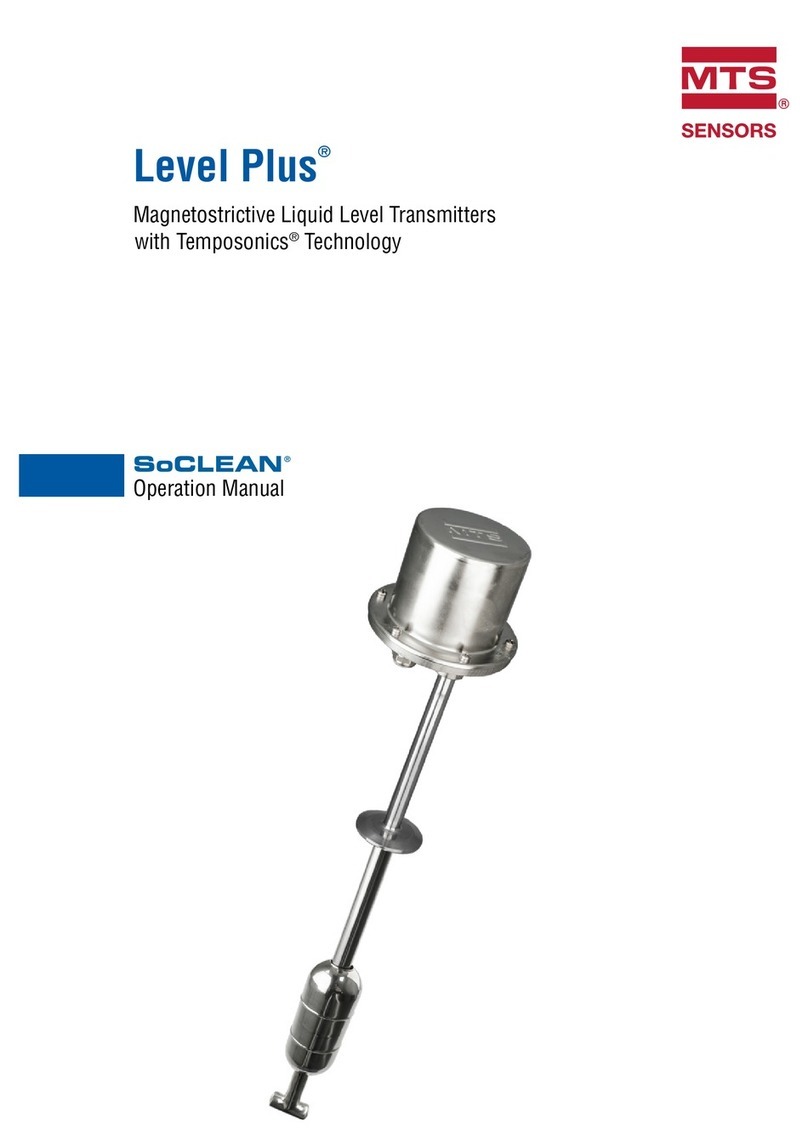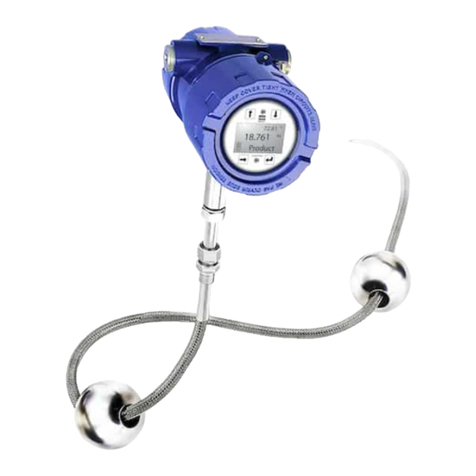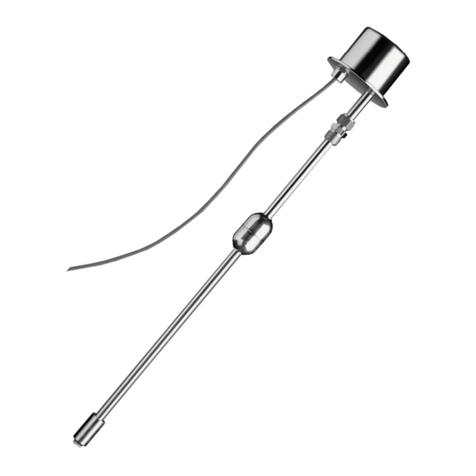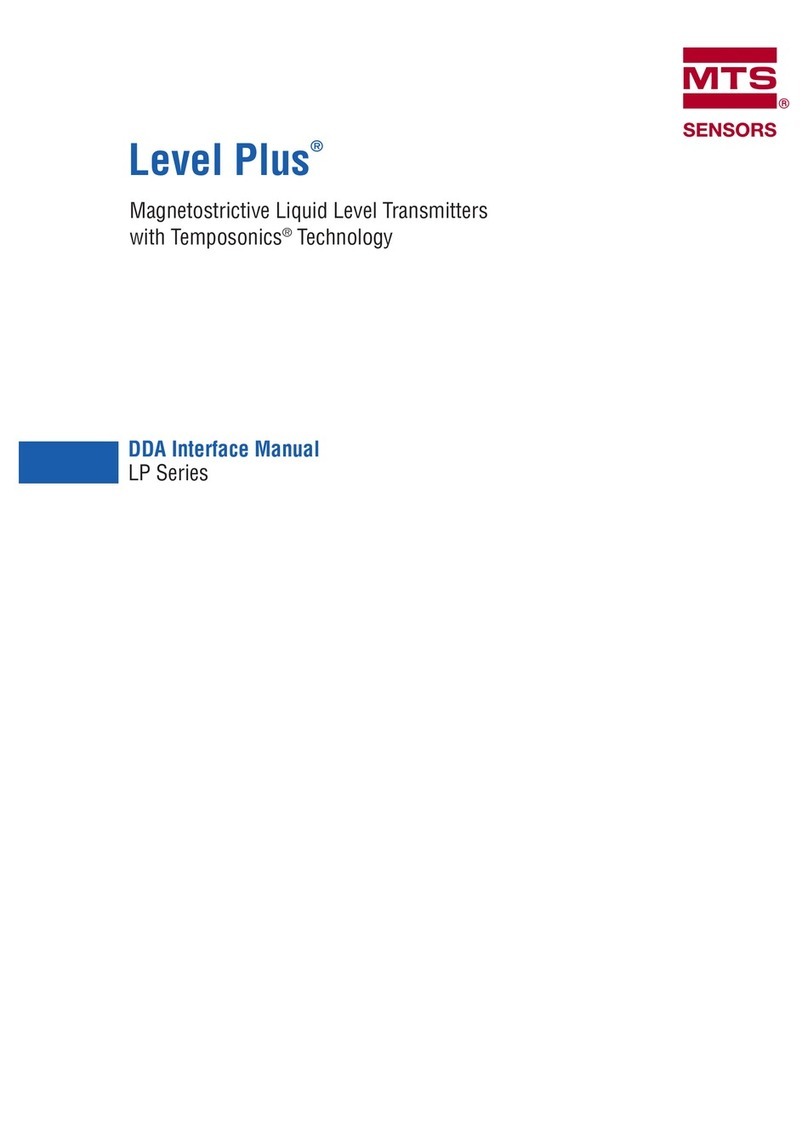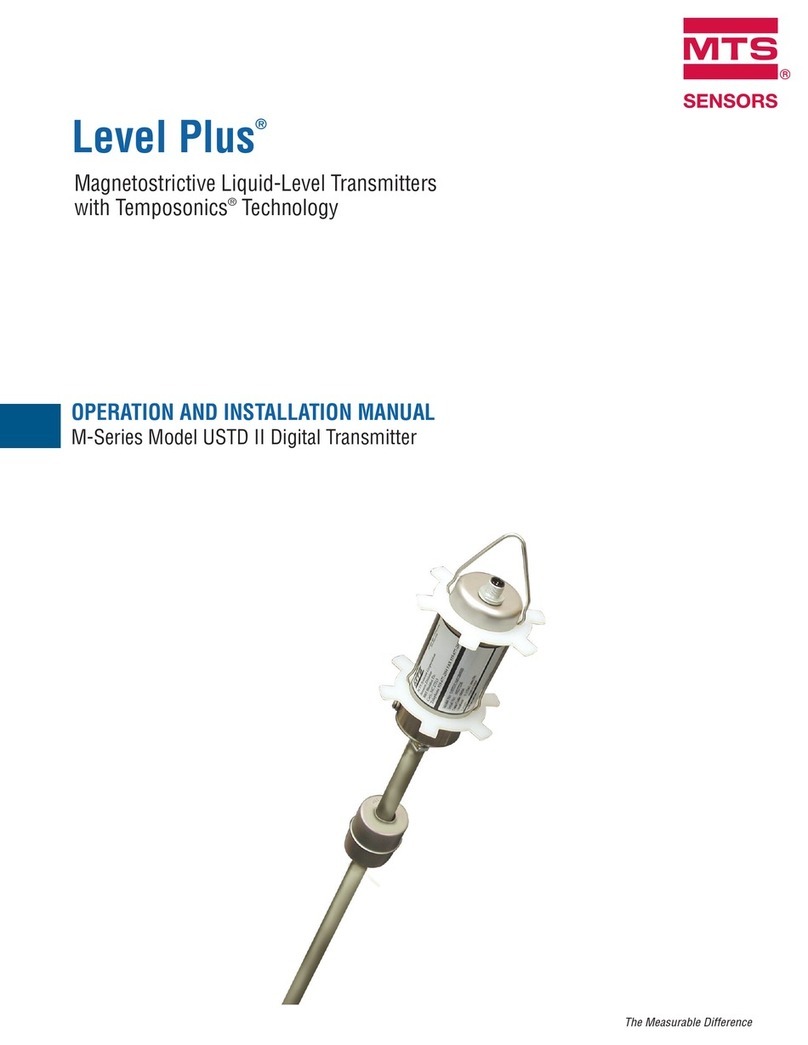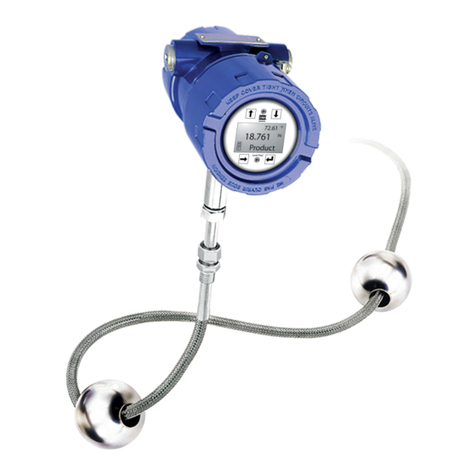I9 I
8. Alarms
Fault
Code
Description Corrective Action
101 Missing
Magnet
• Verify Float Configuration is correct for the
number of floats installed.
• Verify Float(s) are not in inactive zone.
• Verify Auto Threshold is enabled.
• Cycle power to sensor. If proper operation is
not restored, Contact Factory.
102 Internal
Fault 1
Cycle power to sensor. If proper operation is not
restored, Contact Factory.
103 Internal
Fault 2
Cycle power to sensor. If proper operation is not
restored, Contact Factory.
104 Internal
Fault 3
Cycle power to sensor. If proper operation is not
restored, Contact Factory.
105 Lobe Fault
1
• Verify Auto Threshold is enabled.
• Cycle power to sensor.
• If proper operation is not restored, Contact
Factory.
106 Lobe Fault
2
• Verify Auto Threshold is enabled.
• Cycle power to sensor.
• If proper operation is not restored, Contact
Factory.
107 Delta Fault The change in level output exceeded the Delta
limit. The Delta can be adjusted if the process is
changing quickly or this can be an indication of
electrical noise. Check grounding and shielding
before adjusting the Delta value.
108 Internal
Fault 4
Cycle power to sensor. If proper operation is not
restored, Contact Factory.
109 Peak Fault • Verify Auto Threshold is enabled.
• Cycle power to sensor.
• If proper operation is not restored, Contact
Factory.
110 Hardware
Fault 1
Cycle power to sensor. If proper operation is not
restored, Contact Factory.
111 Power Fault • Cycle power to sensor.
• Verify Power Supply rating.
• Verify wiring.
• If proper operation is not restored, Contact
Factory.
112 Hardware
Fault 2
Cycle power to sensor. If proper operation is not
restored, Contact Factory.
113 Hardware
Fault 3
Cycle power to sensor. If proper operation is not
restored, Contact Factory.
114 Hardware
Fault 4
Cycle power to sensor. If proper operation is not
restored, Contact Factory.
115 Timing
Fault 1
Cycle power to sensor. If proper operation is not
restored, Contact Factory.
116 Timing
Fault 2
Cycle power to sensor. If proper operation is not
restored, Contact Factory.
117 Timing
Fault 3
Cycle power to sensor. If proper operation is not
restored, Contact Factory.
Fault
Code
Description Corrective Action
118 DAC Fault 1 Cycle power to sensor. If proper operation is not
restored, Contact Factory.
119 DAC Fault 2 Cycle power to sensor. If proper operation is not
restored, Contact Factory.
120 DAC Fault 3 Cycle power to sensor. If proper operation is not
restored, Contact Factory.
116 DAC Fault 4 Cycle power to sensor. If proper operation is not
restored, Contact Factory.
117 SPI Fault 1 Cycle power to sensor. If proper operation is not
restored, Contact Factory.
118 SPI Fault 2 Cycle power to sensor. If proper operation is not
restored, Contact Factory.
119 Setpoint
Fault
The analog setpoints are too close. Minimum
distance is 150 mm (6 in.) for analog and 290
mm (11.5 in.) for SIL. Adjust programmed
setpoints as needed. (Analog only) If proper
operation is not restored, Contact Factory.
120 Loop 1 Out
of Range
Verify that magnets are positioned within
expected measuring range. Adjust programmed
setpoints as needed. (Analog only) If proper
operation is not restored, Contact Factory.
121 Loop 2 Out
of Range
Verify that magnets are positioned within
expected measuring range. Adjust programmed
setpoints as needed. (Analog only) If proper
operation is not restored, Contact Factory.
122 EEPROM
Fault 1
Cycle power to sensor. If proper operation is not
restored, Contact Factory.
123 EEPROM
Fault 2
Cycle power to sensor. If proper operation is not
restored, Contact Factory.
124 Flash
Failure
Cycle power to sensor. If proper operation is not
restored, Contact Factory.
125 Internal
Error
Cycle power to sensor. If proper operation is not
restored, Contact Factory.
126 Loop 2 Out
of Range
Verify that magnets are positioned within
expected measuring range. Adjust programmed
setpoints as needed. (Analog only) If proper
operation is not restored, Contact Factory.
127 EEPROM
Fault 1
Cycle power to sensor. If proper operation is
not restored, Contact Factory.
128 CRC Fault Reset CRC using LP Dashboard or Handheld
HART Communicator
129 Flash
Failure
Cycle power to sensor. If proper operation is
not restored, Contact Factory.
130 Internal
Error
Cycle power to sensor. If proper operation is
not restored, Contact Factory.
